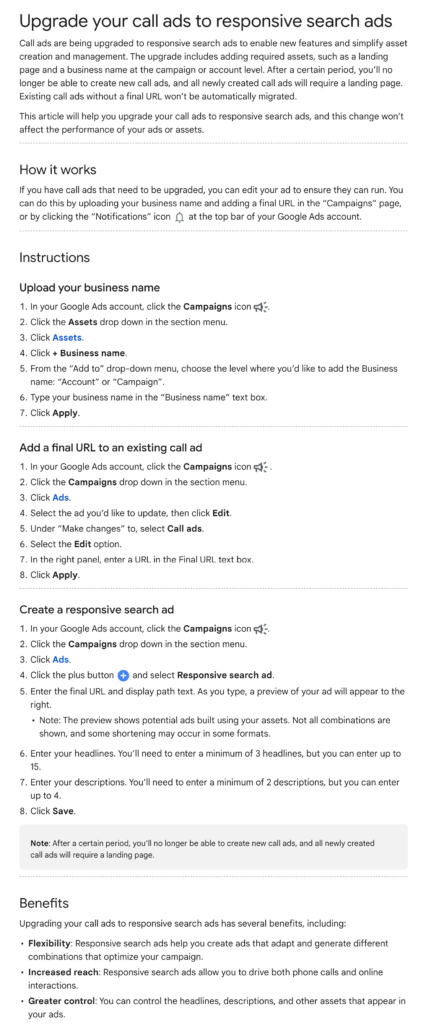New Google Ads Brand Report
Google has quietly introduced a powerful tool for advertisers: the
Read MoreIn a significant shift within its advertising platform, Google has announced that it will sunset call ads sometime next year, transitioning to responsive search ads. This change aims to enhance advertising efficiency and streamline the asset creation and management process. If you rely on call ads to connect with your customers, it’s crucial to understand what this transition means and how to prepare for it.
Google’s decision to phase out call ads stems from its commitment to providing advertisers with more robust tools to engage potential customers. According to Google, “Call ads are being upgraded to responsive search ads to enable new features and simplify asset creation and management.” This migration signifies a move towards a more integrated advertising approach that not only prioritizes phone calls but also enhances the overall user experience across various devices.
Call ads were designed specifically to encourage phone calls to businesses. They appear exclusively on devices capable of making calls, allowing users to directly reach businesses with a single click. This feature has been particularly beneficial for service-based industries where direct communication can lead to quick conversions.
When a potential customer clicks the call button in your ad, the ad initiates a call from their device, providing a seamless way for customers to connect with businesses. However, as digital marketing evolves, so do the tools available to advertisers.
The migration to responsive search ads represents a broader shift in how businesses engage with potential customers. Unlike call ads, responsive search ads allow advertisers to create ads that automatically adapt to show more relevant messages to users based on their search queries. This adaptability can lead to higher click-through rates and better overall performance.
Google will require that all newly created call ads have a landing page associated with them. This means that advertisers will need to ensure their ads are linked to a relevant webpage that provides additional information or services, making the user experience more comprehensive.
Moreover, existing call ads that lack a final URL will not be automatically transitioned to responsive search ads. Advertisers must take proactive steps to either update their current ads with appropriate landing pages or replace them entirely with responsive search ads.
Google has a detailed help document on this change over here.

As Google moves forward with this transition, advertisers need to adapt their strategies accordingly. Here are some steps you can take to prepare for the migration to responsive search ads:

The sunsetting of call ads and the migration to responsive search ads represent a pivotal moment in Google’s advertising strategy. By focusing on improving user experience and ad performance, this transition provides an opportunity for businesses to engage with potential customers more effectively. While it may require some adjustments to your current advertising practices, the long-term benefits of responsive search ads can significantly enhance your marketing efforts with the expertise of the Attorney Marketing Network.
As you prepare for this transition, remember that adapting to new technologies and strategies is crucial for maintaining a competitive edge in the ever-evolving landscape of digital marketing. Embrace the change, and look forward to the potential growth and success that responsive search ads can bring to your business.
By preparing now and understanding the implications of this change, you can ensure that your advertising efforts remain effective and relevant in the months to come. The future of Google Ads may look different, but with the right strategy, you can continue to connect with your audience and drive conversions.
Get Started Today! Contact Attorney Marketing Network to learn how we can help you adapt to these changes and optimize your advertising strategy for maximum impact.